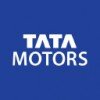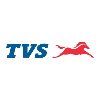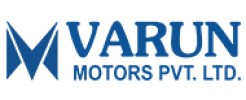
i
Filter interviews by
Clear (1)
Daimler India Commercial Vehicles Executive Accountant Interview Questions and Answers
Daimler India Commercial Vehicles Executive Accountant Interview Experiences
1 interview found
I applied via Recruitment Consulltant and was interviewed in Sep 2024. There was 1 interview round.
(2 Questions)
- Q1. What is EBIT and EBITDA
- Ans.
EBIT stands for Earnings Before Interest and Taxes, while EBITDA stands for Earnings Before Interest, Taxes, Depreciation, and Amortization.
EBIT is a measure of a company's operating performance without factoring in interest and taxes.
EBITDA is a measure of a company's operating performance without factoring in interest, taxes, depreciation, and amortization.
Both EBIT and EBITDA are commonly used to evaluate a company'...
- Q2. What is BEP and MOS
- Ans.
BEP stands for Break-Even Point and MOS stands for Margin of Safety.
BEP is the point at which total revenue equals total costs, resulting in neither profit nor loss.
MOS is the amount by which sales can drop before the company reaches the BEP.
Calculating BEP helps in determining the minimum amount of sales needed to cover costs.
MOS provides a cushion for the company in case of unexpected changes in sales or costs.
Interview Preparation Tips
Top trending discussions






Interview questions from similar companies

Interview Questionnaire
2 Questions
- Q1. What is account goladan rules with explain
- Ans.
Account golden rules are basic principles of accounting that help in maintaining accurate financial records.
There are three golden rules of accounting: Debit the receiver, Credit the giver; Debit what comes in, Credit what goes out; Debit expenses and losses, Credit income and gains.
These rules are used to record transactions in the journal and ledger.
For example, if a company receives cash from a customer, the entry w...
- Q2. Difference between account payable and receivable
- Ans.
Accounts payable is money owed by a company to its suppliers while accounts receivable is money owed to a company by its customers.
Accounts payable is a liability while accounts receivable is an asset.
Accounts payable is recorded on the balance sheet under current liabilities while accounts receivable is recorded under current assets.
Accounts payable is paid by the company while accounts receivable is collected by the ...
Skills evaluated in this interview

I applied via Approached by Company and was interviewed in Oct 2022. There were 2 interview rounds.

(3 Questions)
- Q1. My personal activities
- Q2. My experience and working rolls and responsibility.
- Q3. Your qualifications or exc.. ..........
Interview Preparation Tips
- Mba Finance
- Bsc

(2 Questions)
- Q1. Work from office
- Ans.
Yes, I am willing to work from the office as required for this role.
I am comfortable with working from the office and understand the importance of face-to-face interactions in a professional setting.
I am willing to adhere to any safety protocols or guidelines set by the company for working in the office.
I believe working from the office can enhance collaboration and productivity within the team.
I have previous experien...
- Q2. Accounts
Interview Preparation Tips


(1 Question)
- Q1. Are you going to work longer period ? you have any plans on studying in future ?
Interview Preparation Tips
Try to give answer with some examples
keep eye contact

(1 Question)
- Q1. Share details of your previous job.
Interview Preparation Tips

I applied via Campus Placement and was interviewed in May 2024. There were 4 interview rounds.
Free practice aptitude tests provide the best preparation from employment aptitude test.
(1 Question)
- Q1. One- on- one round is a job interview where a single candidate meet with one interviewer person, over the phone , or through video conferencing.
Group decision is a process where a group of people together to make a choice from a set of options.
Group decision is a process where a group of people together to make a choice from a set of options
Interview Preparation Tips
Be honest
Follow your passion

Interview Questionnaire
3 Questions
- Q1. Tell me about youself
- Ans.
I am a highly motivated and experienced manager with a proven track record of success.
I have over 10 years of experience in managing teams and projects
I am skilled in strategic planning and problem-solving
I have a strong focus on achieving results and meeting targets
I am an excellent communicator and team player
I am constantly seeking to improve my skills and knowledge
- Q2. Asked a few questions related to my m-tech project and it's application
- Q3. Tell me your favourite subjects
- Ans.
My favorite subjects are mathematics, computer science, and economics.
I enjoy solving complex problems in mathematics
I find computer science fascinating and enjoy programming
I am interested in economics and how it affects the world
Interview Preparation Tips
Experience: Cut-off was on the pointer basis for Tata. It was 6.0 Only
Round: Test
Experience: QUESTIONS WERE SIMPLE BUT TIME MANAGEMENT IS VERY IMPORTANT. YOU HAVE TO GIVE THE ANSWERS IN A SINGLE SHOT.THERE WAS NO RETURN OR GO BACK OPTION. ONCE PASSED THE QUESTION, YOU CAN'T VIEW IT AGAIN. SO BE CAREFUL WHILE GIVING THE ANSWERS.
Tips: Time ManagementProper practice of the sections mentioned above
Cut-Off will be high because od moderate level of questions
Round: Group Discussion
Experience: It is one of the challenging round,because you have to show your talent to speak confidently and politely, listen curiously and show your leadership skills to gauge the results in a concluding remark.
I have spoken only for 30-40 seconds after 8 minutes in 10 minutes GD but i have given a new dimension and guided the GD in a appropriate direction so got selected.
Tips: Must work on communication skills.
Quality of content is very important not the quantity.Your thoughts should be clear and audible.Try to take the initiative and to summarize the GD.
Round: Interview
Experience: Panel was very supportive and they will try to make you as comfortable as possible.
Tips: Make a honest self-analysis and try to sell yourself in the best way possible as per the need of the interviewer and the post for which they are looking the people.
Round: Interview
Experience: It was nice.I have seen them my full detailed phase1 report and explained them, in the best possible way.
Tips: Do your project sincerely take a few subjects and prepare them in the best possible way.
They will definitely ask about your favorite subjects and ask very basic questions and major practical applications.
Round: Interview
Experience: i have told IC engines. So they asked me how can you increase the power of the IC engines without doing any major modifications in the engine just by using design of it?
Tips: Your approach is very much important than your correct answer. So give the proper logic behind your answer.Try to be cool, calm and confident even in the worst situations.So many times,they intentional try to puzzle you and observe your approach & reaction.
General Tips: Be confident. It is the one thing without which having all you can't sail out the competition.
Prepare common HR questions honestly like- tell me about yourself?
Why we should hire you and where do you see yourself after 5 years?
Be confident in GD.If not then take some mock GD with friends.
Skill Tips: Your body language and soft-skills matters a lot. So please try to work on it sincerely.
Be honest in the interview. Prepare your projects and industrial training sincerely.Tell them, why they should take you?
Sell yourself in the best way possible. Try to take the control of the interview in your hands and bring them in those areas where you are really strong and talk in those areas as much as possible.
College Name: IIT Guwahati
Motivation: Great place to work and learn especially in R&D.
Automobile world,one of my favorite areas of interest.
Work-life balance and nice location like Pune, Lucknow.
Social initiatives to make a large impact for social-welfare.
Funny Moments: My interview has gone just for 10 minutes.I was successful to make a good 1st impression. They have asked only a few questions and honestly telling i was not able to tell them accurately and they said ok' now you can go.
I thought i am completely out of the game because my colleagues interviews have gone much longer.I was waiting outside of my biggest failure but was shocked to listen my name 4th in the list of 8 people.
The best moment of my life i got selected in my dream company with my best friend..............:)
partyyyyyyyyyyyyyy,,,,,,,,,,,,,,,,,,,,,,,,,,,,,,,,
All the best

I applied via Campus Placement and was interviewed before Apr 2021. There was 1 interview round.
(2 Questions)
- Q1. Tell me about your work experience
- Q2. What is your educational qualification
Interview Preparation Tips

I applied via Recruitment Consulltant and was interviewed before Apr 2021. There was 1 interview round.
(1 Question)
- Q1. Fuel system layout Top complaints that you have solved How sensor works
- Ans.
I have experience in fuel system layout, solving top complaints, and understanding how sensors work.
Fuel system layout involves designing and arranging components such as fuel tanks, pumps, filters, and injectors.
I have successfully resolved customer complaints related to fuel efficiency, engine performance, and fuel leaks.
Sensors work by detecting changes in physical or chemical properties and converting them into ele...
Interview Preparation Tips
Daimler India Commercial Vehicles Interview FAQs
Recently Viewed
Tell us how to improve this page.
Daimler India Commercial Vehicles Interviews By Designations
- Daimler India Commercial Vehicles Senior Manager Interview Questions
- Daimler India Commercial Vehicles Manager Interview Questions
- Daimler India Commercial Vehicles Diploma Trainee Engineer Interview Questions
- Daimler India Commercial Vehicles Neem Trainee Interview Questions
- Daimler India Commercial Vehicles Trainee Interview Questions
- Daimler India Commercial Vehicles Engineer Interview Questions
- Daimler India Commercial Vehicles Senior Engineer Interview Questions
- Daimler India Commercial Vehicles Software Engineer Interview Questions
- Show more
Interview Questions for Popular Designations
- Accountant Interview Questions
- Senior Accountant Interview Questions
- Junior Accountant Interview Questions
- Financial Accountant Interview Questions
- Fund Accountant Interview Questions
- Chartered Accountant Interview Questions
- Accountant Cashier Interview Questions
- Tally Accountant Interview Questions
- Show more
Daimler India Commercial Vehicles Executive Accountant Interview Process
based on 1 interview
Interview experience
Executive Accountant Interview Questions from Similar Companies
Fast track your campus placements

Daimler India Commercial Vehicles Executive Accountant Reviews and Ratings
based on 3 reviews
Rating in categories
|
Manager
591
salaries
| ₹0 L/yr - ₹0 L/yr |
|
Senior Manager
334
salaries
| ₹0 L/yr - ₹0 L/yr |
|
Senior Engineer
317
salaries
| ₹0 L/yr - ₹0 L/yr |
|
Engineer
236
salaries
| ₹0 L/yr - ₹0 L/yr |
|
Junior Engineer
175
salaries
| ₹0 L/yr - ₹0 L/yr |

Tata Motors

Ashok Leyland

Mahindra & Mahindra

VE Commercial Vehicles
- Home >
- Interviews >
- Daimler India Commercial Vehicles Interview Questions >
- Daimler India Commercial Vehicles Executive Accountant Interview Questions












